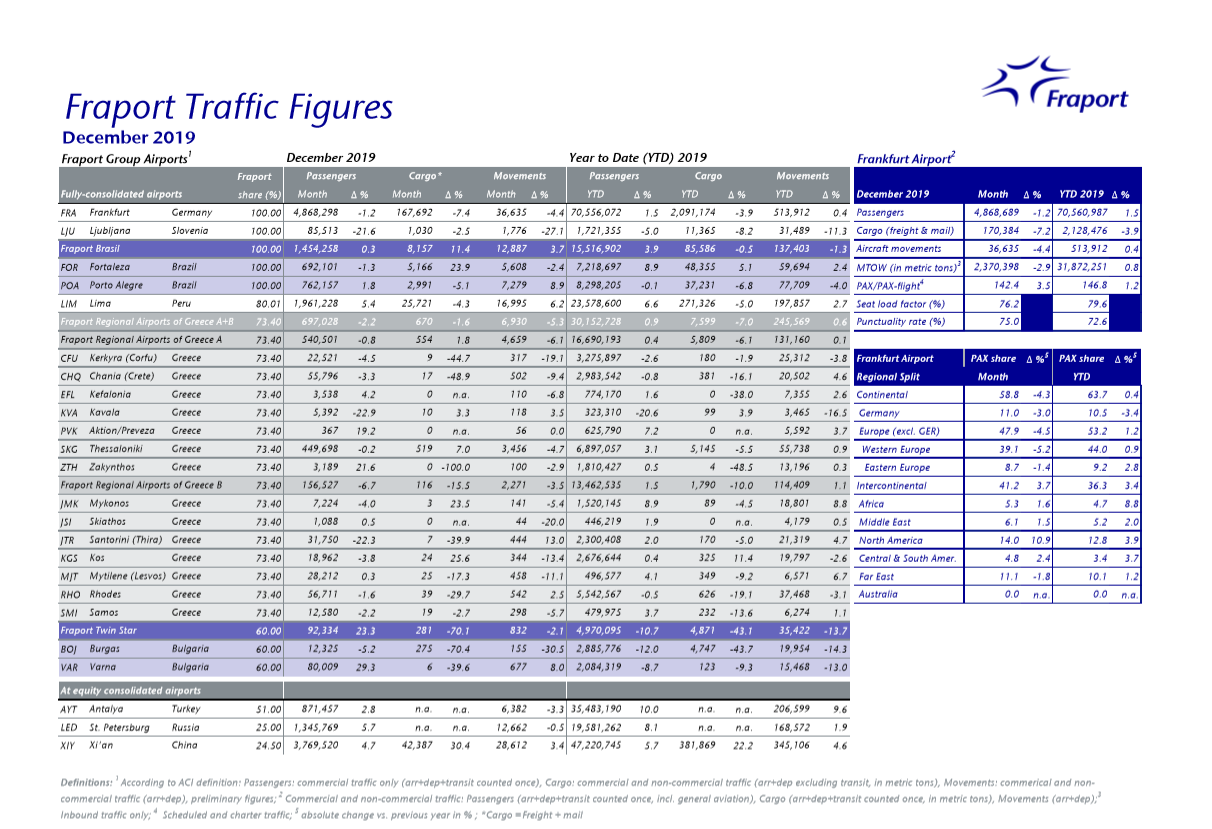Welcome to Moodie Davitt Pax Index, a regularly-updated feed featuring the latest passenger traffic results from airports around the world as the figures are announced.

19 MARCH
UK. Edinburgh Airport saw a small -0.4% year-on-year drop in February passengers to 935,455. The airport has warned that it is predicting a period of zero or close-to-zero passenger demand in the near future because of the COVID-19 outbreak.
18 MARCH
SPAIN. February traffic at Adolfo Suárez Madrid–Barajas Airport was up +6% year-on-year, as 4.4 million passengers were handled by the airport. The figures were announced by AENA, the operator of Spain’s major public airports. The airports across AENA’s network handled more than 16.9 million passengers during the month, a +4% year-on-year increase.
17 MARCH
NETHERLANDS. A total of 4.7 million passengers travelled to, from or via Amsterdam Airport Schiphol in February 2020, a -2.6% drop year-on-year. Asian traffic was down -31.6% compared to February 2019 at 249,600. In its forward-looking outlook, the airport said traffic would be further impacted in March.
16 MARCH
SINGAPORE. Singapore Changi Airport handled 3.45 million passengers in February 2020, a decrease of -32.8% compared to the same period last year as the COVID-19 crisis escalated. Traffic to major travel markets declined across the board, including China (-92%), Hong Kong (-75%), South Korea (-46%), Taiwan (-38%) and Thailand (-33%).
FRANCE. Passenger traffic at Paris’ two major airports climbed marginally in February, with Paris Charles de Gaulle handling 5.1 million travellers (+0.1%) and Paris Orly 2.2 million (+1.3%). However, March figures show a sharp fall to date, with traffic down -29% in the first two weeks.
In February, Chinese traffic plummeted -71.4% at the two airports, however, although US volumes leapt by +9.3% in the period. These markets make up 1.4% and 6.9% respectively of the total Paris Aéroport market but the Chinese retail spend is disproportionately higher.
By region, Asia Pacific traffic fell -28.1% in the month, but other regions grew: North America (+10.8%), the Middle East (+7.8%), Africa (+6.2%), the French Overseas Territories (+5.0%) and Latin America (+1.4%).
15 MARCH
HONG KONG. Passenger traffic at Hong Kong International Airport (HKIA) fell by -68% year-on-year in February, to 1.9 million, as a result of the COVID-19 outbreak.
For the first two months of this year, HKIA handled 7.6 million passengers, a year-on-year decrease of -38.5%.
The combined decline of passenger volume in January and February was mainly caused by a 63% year-on-year slump in visitor traffic.
Airport Authority Hong Kong said: “Passenger traffic was particularly impacted in February due to weak travelling demand amid the outbreak of COVID-19, in addition to immigration restrictions and quarantine measures implemented by authorities in different countries and regions.
“Traffic to and from Mainland China and Southeast Asia recorded the most significant decreases in the month. It is expected to see continued drop in traffic figures in March as airlines have suspended more flights, and authorities in different markets continue to implement immigration restrictions and quarantine measures.”
12 MARCH
GERMANY. Frankfurt Airport recorded a -4.0% decline in passenger numbers to 4.4 million in February. For the first two months of 2020, accumulated passenger traffic decreased by -2.3%. Demand was strongly impacted by the coronavirus outbreak in the last week of February (24 February to 1 March), with passenger volumes declining -14.5%. That negative trend accelerated in the first week of March. Weather-related flight cancellations due to Storm Ciara (named ‘Sabine’ in Germany) further impacted traffic in February.
Passenger traffic within Germany, which fell by -10.8% in February 2020, was hit particularly hard by weakening demand. Intercontinental traffic also contracted by -2.3% with growth on North American and North African routes unable to offset the “massive reduction” in flight offerings to/from China and other Asian destinations. Without the positive effect of the extra leap day, passenger numbers would have declined by -7.2% in the month.
MALAYSIA. There was a sharp decline in February traffic at Kuala Lumpur International Airport. The airport handled 3.65 million passengers, a -24.2% year-on-year fall. This large decline was consistent across international and domestic travel, down -25.7% and -20.5% respectively. The airport said the impact was felt as soon as China imposed a lockdown on certain provinces and COVID-19 was declared a public health emergency of international concern.
AUSTRIA. Vienna Airport said there was limited COVID-19 impact on its February traffic, which was up +8.3% year-on-year at 2,017,461. However, the airport said passenger figures for early March are down -30% compared to March 2019 as the outbreak begins to hit European airports.
11 MARCH
SWITZERLAND. Zürich Airport handled 2.01 million passengers in February, down by -1.2% year-on-year, and a solid result considering the COVID-19-affected travel environment. European traffic was marginally down (-0.6%), offsetting a sharper -2.7% fall in long-haul traffic. As with many European airports, March numbers are likely to tell a different story.
DENMARK. COVID-19 is beginning to have a profound effect on Copenhagen Airport. The Danish gateway first felt the impact of the outbreak in February as passenger volumes fell slightly on last year, reaching almost two million. The impact of the crisis has deepened in March with passenger traffic slumping by close to one third during the first ten days of the month.
A total of 1,987,766 passengers travelled through Copenhagen Airport in February, a decline of -0.4%. However, with 2019 being a leap year, February had 29 days. Adjusted for the extra day, the decline was -3.7%.
The main casualties were passenger volumes related to long-haul intercontinental routes out of Europe, resulting from considerably fewer departures and lower demand on departures to and from Asia. Towards the end of February, short-haul European routes were also affected, and in early March that trend has sharply accelerated.
“During the first ten days of March, the number of departures and travellers in and out of Denmark have dropped by one third,” said Copenhagen Airport CEO Thomas Woldbye. “This is something we’ve never seen before. The situation is developing much faster and more dramatically than what happened during the financial crisis, after 9/11, the ash cloud and any other event that has impacted on aviation since the Second World War.
“The crisis will impact not only airlines and airports. It will also affect large parts of the business community. For example, 32 per cent of Danish exports by value is moved via air freight. The crisis has also been a major blow to the experience economy, impacting hotels, cultural events and venues as well as restaurants.
“There are much fewer tourists and business people flying to Denmark these days and the effect is really noticeable. In Denmark, many people have cancelled their trips, and the drop in demand has made the airlines cancel more and more departures and arrivals,” said Woldbye. He warned that the crisis may have long-lasting and damaging consequences for the country.
“We have to make sure that fear doesn’t overtake common sense,” he continued. Fortunately, the Danish government and the rest of parliament are very concerned with tackling the current health crisis, and they are also making every effort to prevent the situation from becoming a full-blown economic crisis. Businesses, the government and the labour market must join forces and work to curb the impact of the crisis and steer the country through it, limiting the damage as much as possible and preparing the country for when the Corona crisis subsides.”
CANADA. Total traffic at Vancouver International Airport was down slightly year-on-year in January. The airport authority says 2,021,535 passengers used the airport during the month, a drop of -0.3% compared to January 2019.
UK. Heathrow Airport, one of the world’s key travel retail locations, today reported a -4.8% decline in February passenger numbers to 5.4 million (after adjusting for the 2020 leap day), due to lower demand on Asian and European routes. Demand has continued to weaken going into March and Heathrow expects a further year-on-year decrease in coming weeks.
Heathrow CEO John Holland-Kaye said: “The threat of Coronavirus is an increasing challenge for the UK and we are working day and night to ensure Britain’s front door is open and safe for our people and passengers. We will continue to work with the Government to limit the impacts this will have on UK plc.”
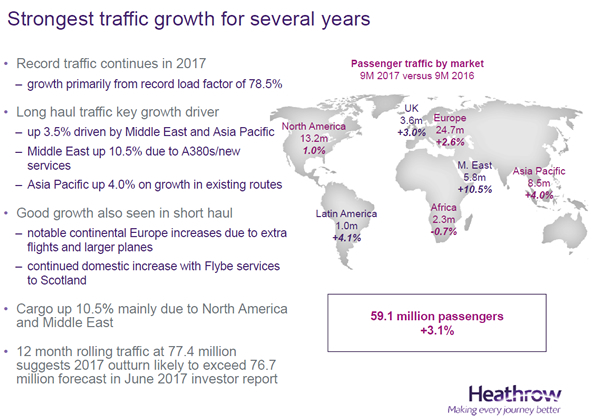
10 MARCH
AUSTRALIA. Total passenger traffic at Sydney Airport was down -9.3% year-on-year in February to 3.1 million. Sydney Airport CEO Geoff Culbert said: “Like our airline partners, we are also experiencing the financial impacts of the coronavirus. There is a direct link between passenger arrivals and departures and our aeronautical revenues, so we share the pain of every flight cancellation. Everyone in the aviation and tourism industry is hurting and we are in discussions with all of our partners about the best way to support each other during this period.”
For the first nine days of March, provisional data indicates a -25% decrease in international passenger traffic and a -6% decrease in domestic passenger traffic at Australia’s busiest airport.

BELGIUM. The COVID-19 outbreak had a limited impact on passenger numbers at Brussels Airport for February as traffic for the month grew +6% year-on-year to 1,738,988. However, the airport put this in perspective, saying the leap year and the Spring break for Belgian schools moving forward to February from March positively impacted performance for the month. Brussels Airport Company CEO Arnaud Feist said: “The aviation industry is going through difficult times. Brussels Airport’s performance during the month of February fell below the forecasts as result of the impact of the coronavirus. With numerous flights cancelled, the effects will be felt more severely in the months of March and April.”
8 MARCH
GERMANY. Traffic across the two Berlin airports – Schönefeld and Tegel – was down -10.2% year-on-year in February.
At Tegel Airport, there were 1,538,758 passengers (-9.3%) and Schönefeld had 741,290 passengers (-11.9%). Flughafen Berlin Brandenburg (FBB) CEO Engelbert Lütke Daldrup commented: “It is not yet clear whether, and to what extent, the worldwide spread of the coronavirus has so far affected the development of air traffic in the capital city region.
“Cancellations of major events such as the ITB, as well as the cancellation of flights by airlines, will influence the development in the coming weeks and months. What is clear, however, is that the development of passenger numbers throughout the entire year and the achievement of the FBB’s economic goals will depend on the further progression of the pandemic.”
6 MARCH
GREECE. Athens International Airport reported that February traffic grew +2.8% year-on-year to 1,364,450, down from a +5.7% increase in January. While the airport was not heavily impacted by the COVID-19 outbreak in the first two months (year-to-date traffic for the period rose +4.3%), March numbers may tell a very different story.

5 MARCH
LATIN AMERICA. Traffic across Aeropuertos del Sureste’s (ASUR) portfolio of Mexican, Colombian and Puerto Rican airports grew +12.7% year-on-year in February 2020 to 4,687,426. The busiest airport operated by ASUR, Cancún International Airport, saw traffic increase +7.4% compared to February 2019 to 2,913,166.
IRELAND. Just over 2.1 million passengers travelled through Dublin Airport in January, a +2% increase compared to 2019. Passenger volumes to and from Continental Europe increased +2%, UK traffic was up +1% and North America increased +4%, but other international traffic declined by -10%.
4 MARCH
US. Charlotte Douglas International Airport passed the 50 million passenger mark for the first time in 2019. A total of 50,168,783 passengers used the North Carolina airport during the year, a +8% year-on-year increase. “Reaching 50 million passengers is a huge milestone for the airport,” said Charlotte Douglas International Airport Aviation Director/CEO Brent Cagle. “It’s the biggest jump in passenger traffic we’ve had since 2010, which shows our tremendous growth just within the past year.”
3 MARCH
JORDAN. Queen Alia International Airport received 679,791 passengers in January, a +3.9% increase year-on-year. Airport International Group CEO Nicolas Claude said: “As the January results kickstart our year on a high note, we are pleased to see the collective efforts of our employees, partners and shareholders come to fruition, adding a new success to our impressive track record.”
US. In its traffic report for January 2020, Boston Logan International Airport said total traffic was up +8.5% year-on-year at 2,940,985. The increase compared to January 2019 came from both domestic (+7.9%) and international (+11.2%) travel.
US. Passenger traffic at Detroit Metropolitan Wayne County Airport reached a record high of 36,769,279 in 2019, a +4.3% year-on-year increase. The growth was driven by domestic travel (+4.8%) as there was a slight drop in international traffic (-0.3%).
28 FEBRUARY
US. McCarran International Airport in Las Vegas recorded more than 4 million passengers for the eleventh consecutive month in January 2020. Total traffic for the month was 4,154,165, a +6.6% year-on-year increase.
26 FEBRUARY
US. San Diego International Airport recorded a sixth consecutive record year for traffic in 2019. During the 12-month period, more than 25 million passengers used the airport, a +4% year-on-year increase. Six new routes were added during the year and San Diego County Regional Airport Authority President & CEO Kim Becker said: “In addition to San Diego being a popular destination, the Airport Authority is focused on connecting San Diego to the world.”
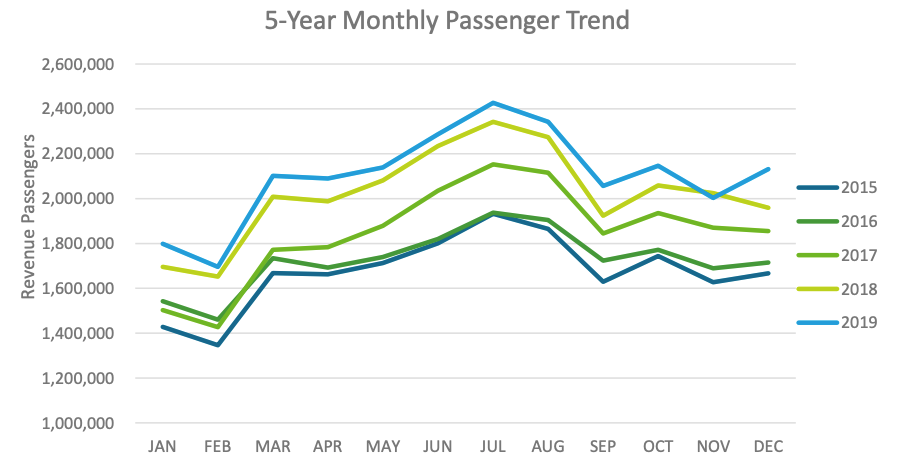
25 FEBRUARY
SINGAPORE. Total passenger movements at Singapore Changi Airport decreased by more than -25% year-on-year in the first two weeks of February with traffic between Singapore and China for the period down by more than -85%.
As of 14 February, there were about 40 weekly services from Changi to fewer than ten cities in Mainland China, a decrease of -90% from around 400 weekly services linking the airport to 36 Chinese destinations previously.
Changi Airport Group made the announcement when reporting its traffic for January, which was up +5.2% year-on-year at 5.95 million.
UK. Traffic at all three airports operated by Manchester Airports Group was down year-on-year in January 2020 as a result of the collapse of Thomas Cook in September 2019. Manchester Airport had 1,775,946 passengers for the month (-0.3%), London Stansted had 1,903,921 (-1.5%) and East Midlands Airport had 190,579 (-11.7%).
21 FEBRUARY
RUSSIA. Pulkovo Airport in St. Petersburg welcomed 1,328,413 passengers in January 2020, +8% more than January 2019. Domestic traffic, led by Moscow and Sochi, grew +9.4% year-on-year to 921,122 and international traffic, led by Minsk and Dubai, had a year-on-year increase of +4.8% to 407,291.
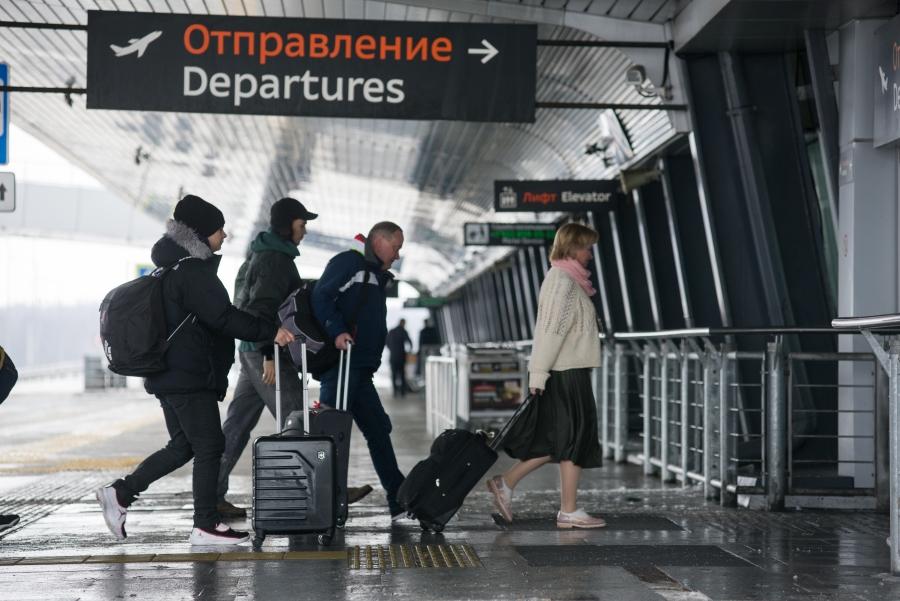
20 FEBRUARY
US. The Metropolitan Washington Airports Authority has announced the total 2019 traffic for the two major airports serving Washington DC was up +2.5% in 2019. A total of 24.7 million passengers (+3.1% year-on-year) used Washington Dulles International Airport and 23.9 million passengers (+1.8% year-on-year) used Ronald Reagan Washington National Airport.
AUSTRALIA. Total traffic at Sydney Airport in January 2020 was 3.9 million passengers. This was down -0.6% year-on-year primarily as a result of the Australian bushfires, but the airport did see an increase in travellers from China and Japan for the month. Commenting on February’s performance to date, Sydney Airport CEO Geoff Culbert said: “We expect traffic to be more significantly impacted in February as a consequence of the coronavirus.”

19 FEBRUARY
MOROCCO. A total of 2,014,660 passengers passed through the Moroccan airports operated by ONDA (Office National des Aéroports) in January 2020, a +7.93% year-on-year increase. Strong growth for the month was reported at the country’s two major airports: Casablanca Mohammed V International (+8.15% at 849,177) and Marrakesh Menara (+9.56% at 509,024).
RUSSIA. Moscow Domodedovo Airport has announced 2.1 million passengers used the airport in January, a +13% year-on-year increase. Compared to the same month in January 2019, domestic travel was up +13 and international travel increased +14%, led by routes to Antalya, Doha, Istanbul, Minsk and Verona.
18 FEBRUARY
BELGIUM. In January, 1,725,155 passengers passed through Brussels Airport, an increase of +3.7% on January 2019, with the airport reporting that COVID-19 did not impact figures. Long-haul traffic grew +7.4% year-on-year, led by flights from Emirates, Ethiopian, Brussels Airlines, United Airlines, Qatar Airways, Thai Airways International and Air Canada.
17 FEBRUARY
FRANCE. A +34.1% year-on-year surge in international traffic helped drive a strong January for Bordeaux–Mérignac Airport. A total of 508,131 people used the airport during the month, a +20.3% year-on-year increase.

SPAIN. January traffic at Adolfo Suárez Madrid–Barajas Airport was up +6.3% year-on-year, as 4.6 million passengers were handled by the airport. The figures were announced by AENA, the operator of Spain’s major public airports. The airports across AENA’s network handled more than 16.9 million passengers during the month, a +2.4% year-on-year increase.
US. A record year has been reported for 2019 at Philadelphia International Airport as annual traffic increased +4.2% to 33.02 million. Domestic and international travel increased, with the airport benefitting from new routes to Berlin, Edinburgh and Dubrovnik.
CHINA (HONG KONG). Hong Kong International Airport handled 5.7 million passengers in January 2020, a -11.7% decrease year-on-year. Passenger traffic to Mainland China, South Korea and Southeast Asia saw the most significant decreases. Hong Kong Airport Authority Airport Operations Executive Director Vivian Cheung said: “The airport’s traffic has been affected by multiple factors, including the outbreak of novel coronavirus in late January and social circumstances. We expect to see a continued decline in traffic numbers in February as airlines have suspended flights and governments in different markets have implemented immigration restrictions and quarantine measures.”
14 FEBRUARY
NETHERLANDS. Amsterdam Airport Schiphol has reported a +1.4% year-on-year rise in passenger numbers for January 2020 to 5.1 million. Travel to Asia was down -7% for the month, but the airport said this was primarily due to the withdrawal of Jet Airways, rather than COVID-19; traffic to China for the month was up +2.4% year-on-year.
FRANCE. Traffic at the two busiest airports in Paris was up +1.2% year-on-year in January as Groupe ADP said there was “limited” impact from COVID-19. During the month, 5.5 million passengers (+2.9%) used Charles de Gaulle and 2.3 million (-2.4%) used Orly. The airports reported year-on-year growth for travel to Europe (+1.1%), French Overseas Territories (+6.6%), the Middle East (+5.4%) and North America (+5.4%), but there was a drop in travel to Asia Pacific (-4.5%), Latin America (-3%) and Africa (-1.5%).
MEXICO. A total of 50,308,049 passengers used Aeropuerto Internacional Benito Juárez in Mexico City during 2019, a +5.5% year-on-year increase. Compared to 2018, international traffic was up +2.6% at 17,647,782 and domestic traffic was up +7.1% at 32,660,267.
US. Austin-Bergstrom International Airport closed out a record 2019 with a total of 17,343,729 people travelling through the airport, a +9.6% increase compared to 2018. International travel increased +21% year-on-year.

13 FEBRUARY
AZERBAIJAN. Passenger traffic at the international airports of Azerbaijan was up +14% year-on-year in January 2020. The vast majority of the travel was through Heydar Aliyev International Airport, which had 336,000 passengers during the month, 40,000 more than January 2019.
SWITZERLAND. In January 2020, 2,148,812 passengers passed through Zürich Airport, a +0.7% increase compared to January 2019.
GERMANY. Fraport Group today said that flight cancellations in late January due to the coronavirus outbreak had a negative effect on its passenger traffic figures last month. Frankfurt Airport handled 4.6 million passengers in January, down by -0.7% year-on-year. Fraport said the decline was mainly due to weak German and intra-European traffic throughout the month, but that in late January it was “further impacted by flight cancellations to and from China in the wake of the coronavirus outbreak”. Aircraft movements fell by -3.4% as airlines consolidated their flight schedules.
12 FEBRUARY
AUSTRIA. The number of passengers at Vienna International Airport in January 2020 was up +14.4% year-on-year at 2,093,673. There was annual growth in travel to several regions including Western Europe (+12%), Eastern Europe (+14.3%), Far East (+18.7%), Middle East (+28.4%), North America (+26.7%) and Africa (+23.6%).
LATVIA. A total of 524,400 passengers were handled by Riga International Airport in January 2020, a figure +12.2% higher than January 2019. This includes a +17.3% year-on-year increase in transfer passengers.
DENMARK. After a drop in January traffic was reported yesterday (11 February) at fellow Scandinavian airport, Stockholm Arlanda, Copenhagen Airport has now reported a -0.4% year-on-year decline in traffic for January 2020 with total passenger numbers for the month at 1,963,426. Commenting on the slowdown, Copenhagen Airport CEO Thomas Woldbye said: “Aviation is under pressure globally, and 2020 began with some degree of economic uncertainty due to the coronavirus outbreak, the trade war, Brexit and the essential climate transition of aviation. In addition, our second-largest customer, Norwegian, is currently implementing a new strategy of putting profitability ahead of traffic growth.”
KYRGYZSTAN. In 2019, 3,683,347 passengers passed through Manas International Airport, the main gateway to Kyrgyzstan; an increase of +2.6% compared to 2018.
LATIN AMERICA. Aeropuertos del Sureste (ASUR) has announced total traffic across its portfolio of Mexican, Colombian and Puerto Rican airports grew +7.8% year-on-year in January 2020. Total passenger numbers at the busiest airport ASUR operates in Mexico, Cancún International Airport, increased +4.1% compared to January 2019 to reach 2,277,114.
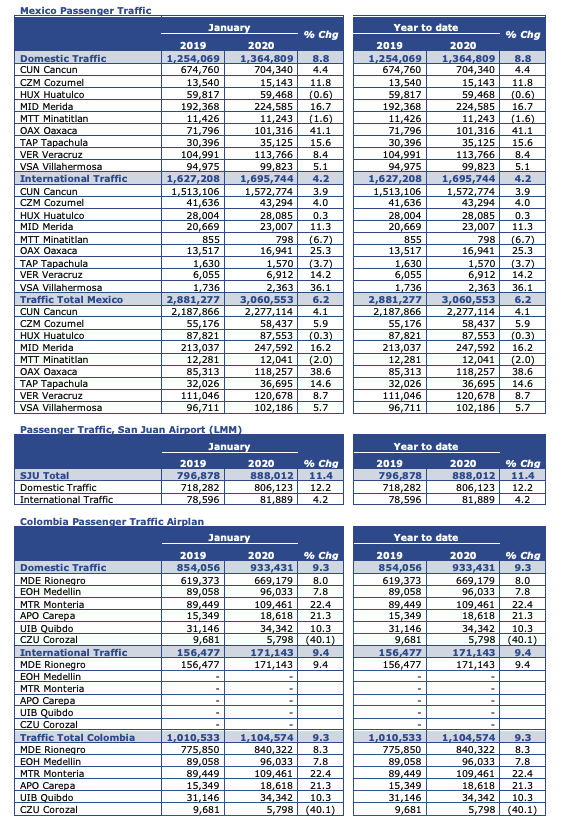
11 FEBRUARY
SWEDEN. Stockholm Arlanda Airport saw a -6% year-on-year decrease in passenger traffic in January, with 1,692,000 travellers passing through the Swedish hub. International traffic was down -4%, to 1,352,000. Operator Swedavia noted a continued weak traffic trend across its ten airports in Sweden, with airlines “reducing their seating capacity to a greater extent”.
UK. Over 6 million passengers travelled through Heathrow Airport in January 2020, a +2.9% increase compared to January 2019. The growth was led by domestic travel, which increased +10.2% year-on-year. Traffic to the Middle East (+7.6%) and North America (+4.7%) grew, but there was a drop in travel to Asia Pacific (-3.9%) and Latin America (-3.9%).
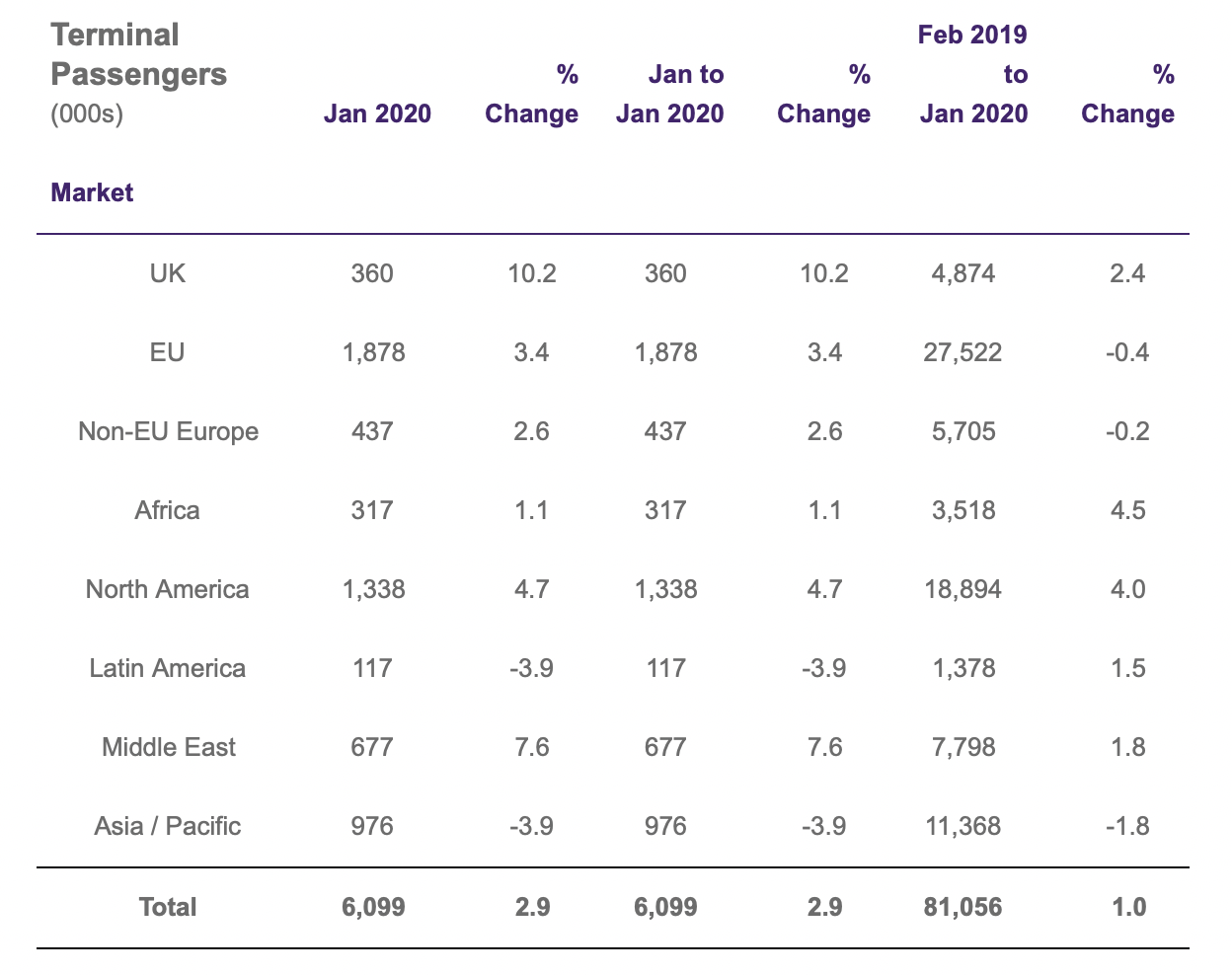
UAE. Dubai World Central has reported a +81.5% surge in passenger numbers for 2019 with annual traffic exceeding 1.6 million. Dubai Airports said the sharp increase was in part because of the relocation of flights during the 45-day closure of the southern runway of Dubai International Airport (DXB) in April and May. Russia was the top destination for the year followed by Saudi Arabia and India.

7 FEBRUARY
GREECE. Traffic at Athens International Airport continued to grow in January 2020, with 1,472,593 passengers passing through the airport (+5.7% compared to January 2019). The year-on-year growth was driven by international traffic, which was up +10.1%, but domestic traffic declined -3.5%.
6 FEBRUARY
US. Miami International Airport has announced 2019 was a record year for passenger traffic. The Florida airport served 45.9 million passengers over the year, nearly 1 million more than its 2018 total. New routes to London Gatwick, Casablanca, Warsaw, Córdoba and Paris Orly airports helped drive traffic in 2019. “Last year was very successful for Miami International Airport in terms of passenger and cargo growth, as well as in the expansion of our route network into new markets,” Miami International Airport Director & CEO Lester Sola said.
US. The Port Authority of New York and New Jersey has announced the annual traffic figures for its four commercial airports.
John F Kennedy International Airport reported a new high for domestic and international travellers as 62 million passengers (up +1.5% year-on-year) used the airport in 2019.
More than 46 million travellers passed through Newark Liberty, a +1% increase compared to 2018.
LaGuardia recorded a +3.3% increase compared to 2018 to handle 31 million passengers.
New York Stewart Airport was used by 1.5 million passengers during the year.
5 FEBRUARY
PHILIPPINES. A total of 12,662,055 passengers used Mactan-Cebu International Airport in 2019, an +11.3% year-on-year increase. The figures were buoyed by a strong December where domestic traffic increased +16% and international travel was up +33% compared to December 2018.
UAE. Dubai International (DXB) retained its position as the world’s leading airport for international passengers for the sixth consecutive year in 2019, despite a -3.1% decline in traffic year-on-year. Passenger numbers reached 86,396,757, and were affected by the 45-day closure of the airport’s southern runway to enable its refurbishment, global market conditions as well as the grounding of Boeing 737 Max aircraft across the world.
The total still placed DXB ahead of number two airport London Heathrow, which handled 6 million fewer passengers.
4 FEBRUARY
US. Los Angeles International Airport (LAX) has reported a record 2019 with nearly 88.1 million travellers using the Californian airport (+0.62% year-on-year). Domestic passenger numbers reached 62,371,691 (+1.5%) and international travel dropped -1.4% to 25,696,322. “Another year of record passenger traffic at LAX is the latest milestone in our work to bring Los Angeles to the world and the world to Los Angeles,” the city’s Mayor, Eric Garcetti, said.
SINGAPORE. Singapore Changi Airport handled 68.3 million passengers in 2019, a year-on-year increase of +4%. All regions registered traffic growth with the largest gain for the Americas (+20%). The top passenger markets for the year were Indonesia, China, Malaysia, Australia and Thailand.
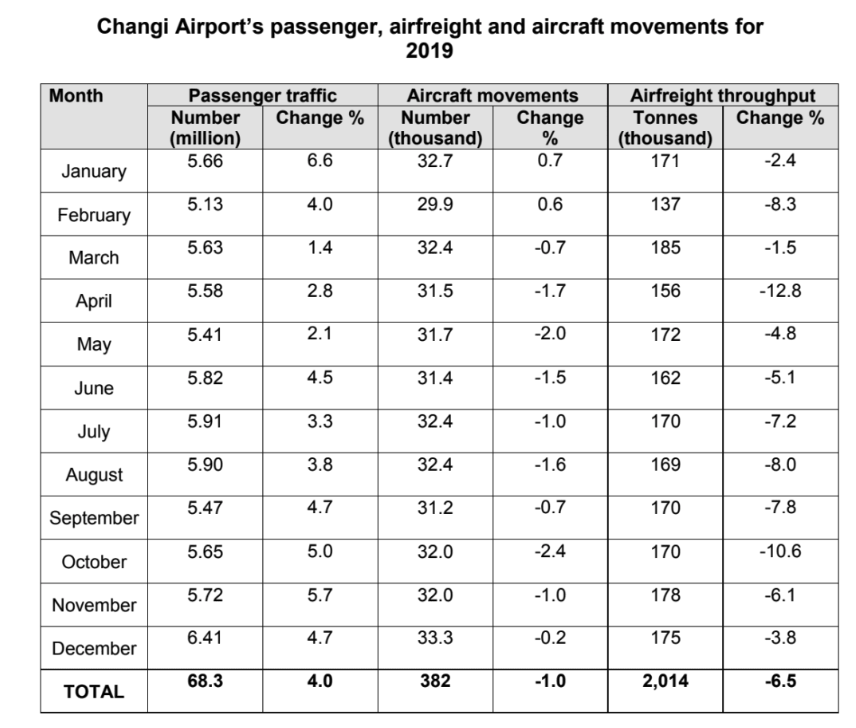
3 FEBRUARY
US. Minneapolis-St Paul International Airport surpassed 39 million annual passengers for the first time in 2019. The +4% increase in traffic to 39,555,036 passengers marked a third consecutive record year for the airport. “A strong economy along with new routes and increased airline competition continues to propel demand for air travel,” said Metropolitan Airports Commission CEO Brian Ryks.
LITHUANIA. Traffic at all three of Lithuania’s international airports increased in 2019. Vilnius Airport (+2%) served just over 5 million passengers, Kaunas (+15%) had 1.16 million passengers and Palanga’s airport (+7%) had traffic of 338,000 for the year. Noting the double-digit growth in Kaunas, Lithuanian Airports Head of Aviation Services Aurimas Stikliūnas said: “Such growth rate is the highest not only in Lithuania, but in the whole region as well. The growth rate of the number of passengers in Kaunas exceeded that of Riga, Tallinn and Warsaw airports.”
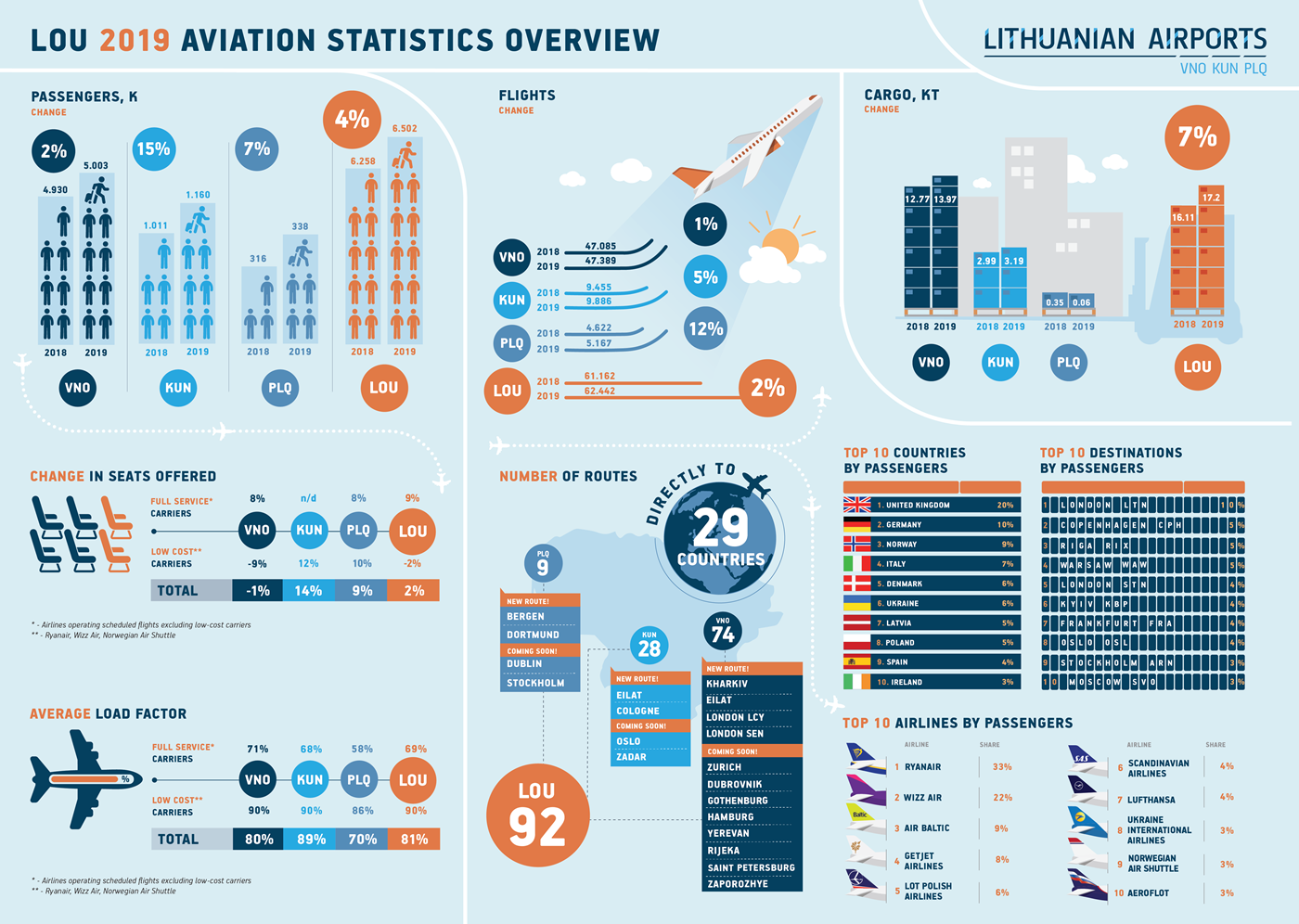
31 JANUARY
NETHERLANDS. Europe’s third-busiest airport, Amsterdam Airport Schiphol, posted a +0.9% year-on-year rise in passenger traffic in 2019 to 71,707,144. European passengers increased +1.1% year-on-year and intercontinental traffic was up +0.8%.
US. Mineta San Jose International Airport passenger traffic continued to soar in 2019, with nearly 15.7 million departing and arriving passengers, up +9.3% year-on-year. The Silicon Valley gateway has grown over the past four years to be America’s fastest-growing major airport. 2019 was the second consecutive year for record passenger traffic.
SJC travellers enjoyed more nonstop destinations; the opening of six more gates to accommodate continued growth; the opening of a second common-use lounge; and several new food, beverage and retail concessions. In addition, SJC became the first US airport to offer all-digital, in-terminal advertising (from Clear Channel).
30 JANUARY
US. Nearly 46.3 million passengers passed through Phoenix Sky Harbor Airport in 2019, a +3% year-on-year increase. Traffic was strong throughout the year, but December was particularly impressive, recording a +9% year-on-year increase. “The record-breaking number of passengers Sky Harbor saw in 2019 is another data point highlighting the importance of investing in our airport,” Phoenix Mayor Kate Gallego said.
US. McCarran International Airport in Las Vegas posted a third consecutive year of record passenger traffic in 2019. Domestic passenger volumes grew +3.9% and international traffic was up +0.5% as 51.5 million passengers used the airport throughout the year.
29 JANUARY
RUSSIA. The Federal Air Transport Agency has announced passenger numbers for Moscow’s three major airports in 2019. Traffic at Sheremetyevo (+9% at 49,438,545) and Vnukovo (+11.7% to 24,001,521) increased year-on-year, while Domodedovo (-3.9% at 28,252,337) experienced a drop.
UAE. A record 13.6 million people used Sharjah International Airport in 2019, a +13% increase compared to 2018. “We are happy with the statistics from 2019,” Sharjah Airport Authority Chairman HE Ali Salim Al Midfa said. “We look forward to further accomplishments including the completion of expansion plans for the airport, which will increase capacity to 20 million passengers per annum by 2025.”
IRELAND. Dublin Airport welcomed a record 32.9 million passengers in 2019, up +4% year-on-year.
About 30.7 million people started and ended their journey at the capital’s gateway last year, while almost 2.2 million passengers used the airport as a hub. Dublin Airport is celebrating its 80th birthday this year, and over 580 million passengers have been welcomed at the airport since its official opening on 19 January 1940.
Dublin Airport noted that a stronger first-half performance had given way to more modest growth in the later part of the year. Short-haul traffic increased by +5% to 27.7 million, while long-haul passenger numbers grew by +4% to almost 5.2 million. The transatlantic and European markets were the best-performing sectors. UK traffic increased slightly, while traffic to other international destinations, including the Middle East, Africa and Asia, was flat.
Dublin Airport is now the fifth-largest airport in Europe for transatlantic connectivity and this growth has been underpinned by the increasing numbers of connecting passengers who are choosing to fly through Dublin.
28 JANUARY
US. St. Louis Lambert International Airporthas reported its fifth straight year of passenger growth, serving nearly 15.9 million passengers in 2019. This represented a +1.6% rise against 2018’s 15.6 million passengers. A streak of 50 straight months of passenger growth for the Missouri airport came to an end in November 2019. However, passenger activity rebounded in December with +3.7% growth, or 1.29 million passengers versus 1.24 million passengers in the corresponding month of 2018.
INDIA. Kempegowda International Airport in Bangalore handled 33.65 million passengers in 2019, an increase of +1.05% compared to 2018. The top three domestic destinations were Delhi, Mumbai and Hyderabad; the top three international destinations were Singapore, Dubai and Kuala Lumpur.
27 JANUARY
MOROCCO. ONDA (Office National des Aéroports), the operator of all passenger airports across Morocco, reports more than 25 million passengers passed through its airports in 2019, an increase of +11.2% compared to 2018. Casablanca Mohammed V International led the way with 10,306,293 passengers in 2019 (+5.9% year-on-year) and Marrakesh Menara reported impressive annual growth of +21.1% on its way to 6,396,394 passengers for the year.

24 JANUARY
CANADA. A record 18 million passengers used Calgary International Airport in 2019, a +3.5% year-on-year increase. “Our focus remains on ensuring every guest has a positive experience at YYC and in supporting our airline partners,” Calgary Airport Authority Vice President Finance, Strategy & Chief Financial Officer Rob Palmer said.
US. A +4.7% year-on-year increase in domestic traffic helped counteract at -4.47% decline in international traffic at Orlando International Airport in November. In total, 4.19 million passengers travelled through the Florida airport during the month, a +3.4% year-on-year increase.
23 JANUARY
GERMANY. A “difficult” 2019 for Cologne Bonn Airport saw traffic drop -5% year-on-year, as 12.4 million passengers passed through the airport. “A difficult year has come to an end,” said Flughafen Köln/Bonn GmbH CEO Johan Vanneste. “Just like all other airports, [we] had to do battle with a very tense market environment last year. Airline consolidations and complete withdrawals from the market have shaken up the industry and are affecting passenger figures.”
UAE. Ahead of the Chinese New Year, Dubai International Airport (DXB) has announced 2019 was a record year for passengers from China at the world’s busiest airport for international traffic. Advance figures say that 3,681,896 passengers from China travelled through the airport during the year, a +5% year-on-year increase. Read more about DXB’s Lunar New Year celebrations here and how Dubai Duty Free is marking the occasion here.
22 JANUARY
FRANCE. It was a tenth consecutive year of growth at Bordeaux Airport in 2019 with 7.7 million passengers passing through the airport, a +13.3% year-on-year increase. The top destinations for the year were Paris, Lyon, London, Marseille and Amsterdam. Aéroport de Bordeaux-Mérignac Executive Board Chair Pascal Personne said: “Yet again, our low-cost airline development policy has paid off this year since these companies generated 90% of new routes.”
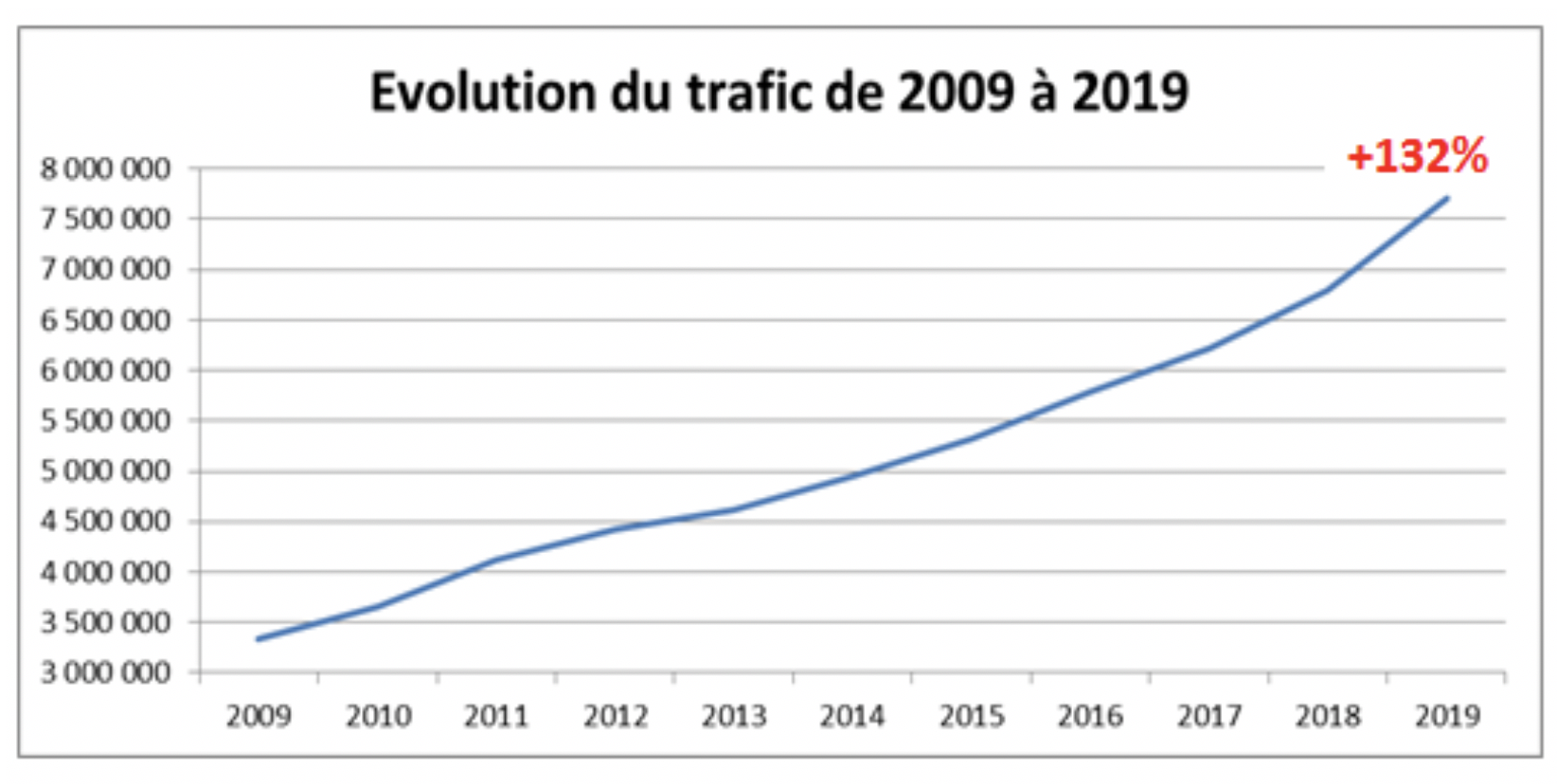
AUSTRALIA. Passenger numbers at Brisbane Airport increased by +2.1% year-on-year in 2019 to 24.1 million. The growth was consistent across both international travel (+2.2%) and domestic travel (+1.3%). “Brisbane as we know it is evolving and going from strength to strength thanks to a number of major infrastructure projects currently underway,” remarked Brisbane Airport Corporation CEO Gert-Jan de Graaff.
ROMANIA. Henri Coandă Airport in Bucharest recorded 14,707,376 passengers in 2019, a +6.4% year-on-year increase for Romania’s busiest airport.
21 JANUARY
AUSTRIA. The Flughafen Wien Group has reported 31.7 million passengers passed through Vienna Airport in 2019, a +17.1% year-on-year increase. Passenger growth at the airport is forecast to slow to +3-5% in 2020 due to no further slots being available at peak periods. The overall Group, which also includes the company’s strategic foreign investments, handled 39.5 million passengers in 2019, representing +15% year-on-year growth.
CANADA. Passenger numbers at Ottawa/Macdonald–Cartier International Airport were flat year-on-year in 2019 at 5,106,487. While domestic and transborder traffic to the US both dropped slightly, international passenger traffic to outside of Canada and the US increased +10%.
FRANCE. Traffic at Marseille Provence Airport for 2019 was up +8.1% year-on-year at 10,151,743. Growth for the year was driven by international markets, which were up +11.1%.
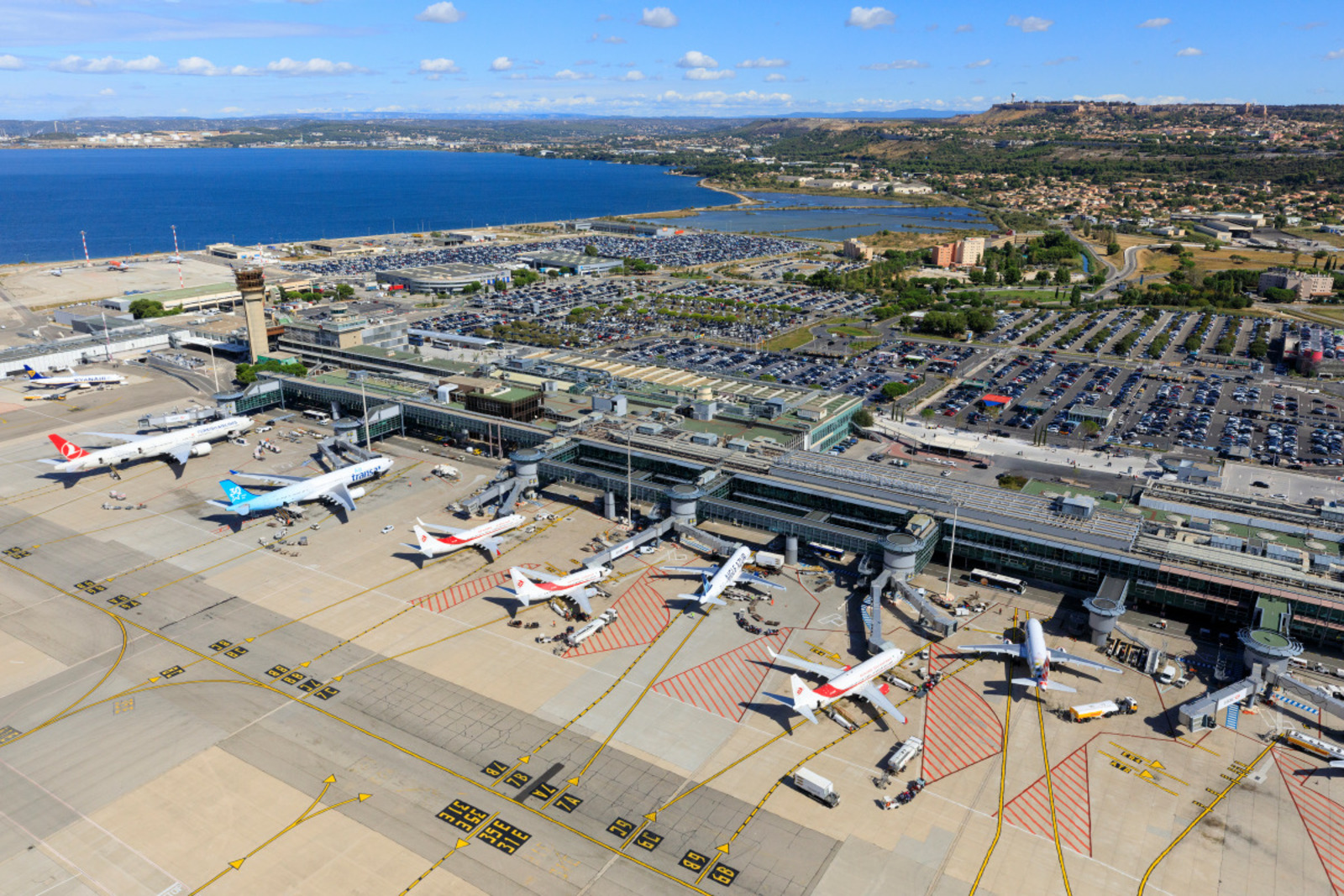
20 JANUARY
US. Cleveland Hopkins International Airport welcomed 10,040,817 passengers in 2019, a +4.1% increase over 2018. “What is important about our continued growth is that we continue to give our guests the best possible experience,” said Airport Director Robert Kennedy. “As our passenger numbers rise, so have our Airports Council International (ACI) Airport Service Quality (ASQ) guest satisfaction scores.”
INTERNATIONAL. The Vinci Airports portfolio of 46 airports served almost 255 million passengers in 2019, a +5.7% year-on-year increase on a comparable network base.
The 10 airports in Portugal operated by Vinci saw traffic jump +6.9% year-on-year, with Porto (+9.8%) and Lisbon (+7.4%) seeing a particularly strong year-on-year jump.
In the UK, Gatwick Airport reported 46.6 million passengers for the year, a +1.1% year-on-year increase.
In France, passenger traffic across the airports operated by Vinci was up +8% year-on-year. This was driven by growth in Lyon (+6.4%) and Nantes (+16.6%).
In Japan, the Rugby World Cup helped contribute to a +7.2% year-on-year rise for the three facilities operated by Vinci in 2019. Kansai International Airport reported 31.9 million passengers for the year, an increase of +10.2% year-on-year.
The full figures for Vinci Airports for 2019 and the final quarter of the year are below.

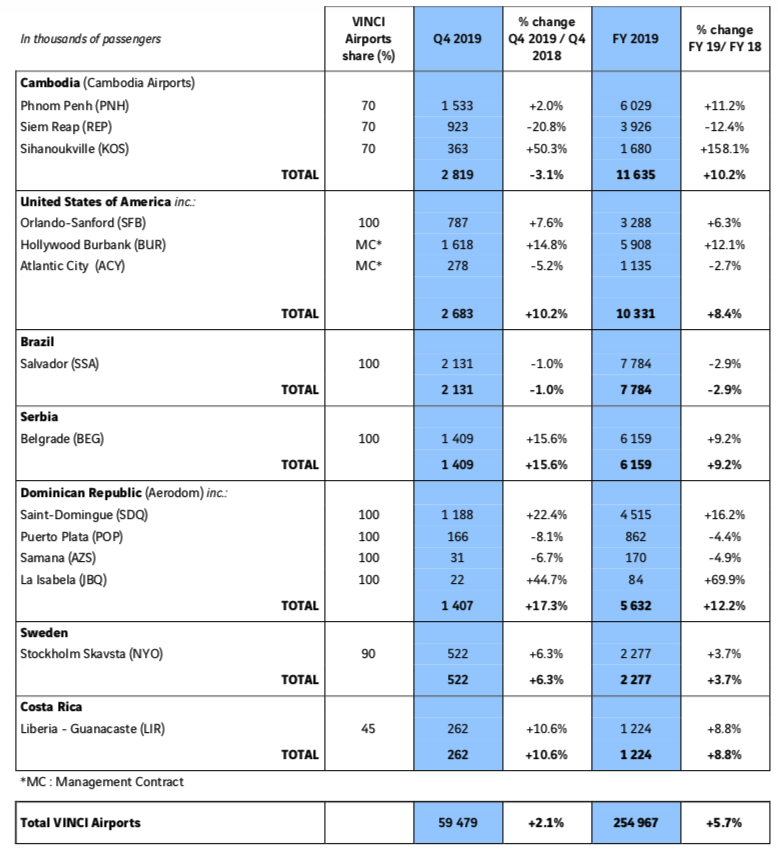
AUSTRALIA. Sydney Airport passenger traffic grew marginally (+0.1%) year-on-year in 2019 to 44.4 million, with international volume growth (+1.1%) outstripping domestic (-0.5%).
Sydney Airport CEO Geoff Culbert said the overall result was “solid” in the face of trading conditions that were “at their toughest in more than a decade”.
He said: “When you look at the different nationalities coming through the airport, the growth we’ve had in a number of key markets like the US and India has helped offset the slowdown from places like the UK throughout 2019.”

HONG KONG. Passenger traffic at Hong Kong International Airport fell by -4.2% year-on-year in 2019 to 71.5 million. The decline comes against the background of anti-government protests in Hong Kong, which has seen tourism and retail revenues slump.
Passenger numbers fell by a sharp -12.5% in December to 5.7 million, with Mainland Chinese and Southeast Asian travel posting the biggest falls by region.
17 JANUARY
RUSSIA. In 2019, Pulkovo St Petersburg Airport served 19,581,262 passengers, +8.1% more than in 2018, with domestic traffic up +9.8% and international passengers ahead +5.3% year-on-year. The top domestic destinations were Moscow, Simferopol and Sochi, while the top international destinations were Antalya, Minsk and Frankfurt.
UK. A total of 14,747,830 people travelled through Edinburgh Airport last year, making 2019 the busiest in the airport’s history and the busiest-ever year for a Scottish airport. The growth was driven by international traffic, which was up +5.3% year-on-year, with domestic traffic down -0.7%. Edinburgh Airport Chief Executive Gordon Dewar commented: “We’re delighted to deliver a record year for any Scottish airport as passengers continued to take advantage of new routes, new airlines and the opportunity to expand their horizons and travel the world.”
CZECH REPUBLIC. Václav Havel Airport Prague handled 17,804,900 passengers in 2019, up +6% year-on-year and a new record. The airport reported a +10.9% increase in the number of passengers on long-haul routes, a trend which will continue in 2020 as new routes to Chicago and Hanoi are added. “The +6% increase in the number of handled passengers that was reported last year is a great result. With these results, we slightly exceeded our prediction made at the beginning of 2019. The reasons for the steady increase include a higher number of long-haul connections, as well as more frequent [flights] to the busiest European cities, such as London, Amsterdam and Moscow,” said Prague Airport Chairman of the Board of Directors Vaclav Rehor.
16 JANUARY
HUNGARY. Budapest Ferenc Liszt International Airport exceeded 16 million passengers for the first time in 2019. Hungary’s busiest airport handled 16,173,489 passengers, up +8.8% on 2018. London remained the most popular destination while the airport also benefited from new routes to Shanghai, Chengdu, Chongqing and Sanya.

15 JANUARY
CHILE. A total of 24,645,705 passengers passed through Arturo Merino Benítez International Airport in Santiago in 2019, a +5.7% year-on-year increase. This came despite a -1.9% year-on-year drop in traffic for December.
JORDAN. Queen Alia International Airport in Amman welcomed 8,924,080 passengers in 2019, a year-on-year jump of +5.9%. This increase came as December traffic increased +4.7% year-on-year.
FRANCE. Aéroports de Paris posted a +2.5% year-on-year increase in passenger numbers across its two international Parisian airports. Paris-Charles de Gaulle Airport welcomed 76.2 million passengers (+5.4% year-on-year) and Paris-Orly Airport 31.9 million (-3.8% year-on-year); the decline at Orly is due to the closure of the airport’s main runway 28 July – 2 December.
TURKEY. Passenger traffic across TAV Airports’ operations decreased by -32.6% year-on-year in 2019 due to Istanbul Atatürk Airport ceasing commercial operations on 6 April. Excluding Atatürk, TAV has reported passenger numbers were up +1.3% year-on-year at 89,087,177. This growth was led by Antalya Airport, where traffic for 2019 was up +12.6% year-on-year at 35,714,206.

GERMANY/INTERNATIONAL. Frankfurt Airport posted record passenger volumes in 2019, despite what parent company Fraport described as slower growth. Most Fraport Group airports worldwide also performed well.
Frankfurt Airport served over 70.5 million passengers in 2019, a +1.5% increase year-on-year and the first time the German gateway has exceeded the 70-million mark in a calendar year.
However, following a positive trend (+3.0%) in the first half of 2019, passenger volumes largely stagnated in the second half of the year (up +0.2%). In the months of November and December 2019, passenger traffic declined for the first time since November 2016.
The relatively weaker growth in full-year passenger numbers can be mainly attributed to domestic traffic (-3.4%) and European traffic (up just +1.2%). In contrast, and encouragingly from a travel retail perspective, intercontinental traffic to and from Frankfurt increased by +3.4% in 2019.
Fraport Executive Board Chairman Dr. Stefan Schulte commented: “After a long and extraordinarily strong growth phase – during which we gained almost 10 million passengers in the last three years – we can now see that the aviation industry is entering a consolidation phase. Broader economic and geopolitical uncertainties have worsened, while unilateral national measures – such as raising the local air traffic tax – are placing an additional burden on the German aviation industry in 2020.”
Outside Germany (click chart to enlarge), Ljubljana Airport in Slovenia was affected by the bankruptcy of home-carrier Adria Airways and other factors, recording a -5.0% traffic decline in 2019 and a -21.6% slump in December
In contrast, the two Brazilian airports of Fortaleza and Porto Alegre posted combined traffic growth of +3.9% to 15.5 million passengers (December 2019: up +0.3%). Lima Jorge Chávez International Airport in Peru continued the strong performance of previous years, with traffic rising by +6.6% (December 2019: up +5.4%).
Traffic at the 14 Greek regional airports expanded slightly by +0.9% to nearly 30.2 million passengers in 2019 (December 2019: down -2.2%). Following years of dynamic growth, traffic at Varna and Burgas airports in Bulgaria declined by -10.7%, due to airlines consolidating their flight offerings (December 2019: up +23.3%).
Traffic at Turkey’s Antalya Airport once again advanced rapidly, rising by +10.0% to almost 35.5 million passengers (December 2019: up +2.8%).
Pulkovo Airport in St. Petersburg, Russia, saw traffic climb by +8.1% to some 19.6 million passengers (December 2019: +up 5.7%). At Xi’an Xianyang International Airport in China, traffic jumped by +5.7% to over 47.2 million passengers (December 2019: up +4.7%).
14 JANUARY
RUSSIA. The number of passengers served at Sheremetyevo International Airport increased +8.9% in 2019 to 49.9 million. The most popular international destinations over the year were Antalya, Yerevan, Paris, Beijing and Tel Aviv. The most popular domestic destinations were St. Petersburg, Simferopol, Sochi, Yekaterinburg and Krasnodar.
SWITZERLAND. A total of 31,507,692 passengers passed through Zurich Airport over the course of 2019. The number of local passengers rose by +0.1% to 22.2 million and transfer passengers rose +4.2% to 9.2 million. Click here to read more
BELGIUM. Brussels Airport rounded off a strong 2019 with total passenger numbers of 1,901.816 for December, a +5.1% increase compared to December 2018. This means the airport saw a total of 26,360,003 passengers over the course of 2019, a +2,7% year-on-year increase.
GERMANY. It was a tenth consecutive record year for Munich Airport as traffic increased +4% year-on-year to 47.9 million. The airport said it was also expecting traffic to grow in 2020 thanks to Lufthansa’s decision to station more A380 and A350 long-haul airliners in Munich and the resulting addition of new intercontinental routes.
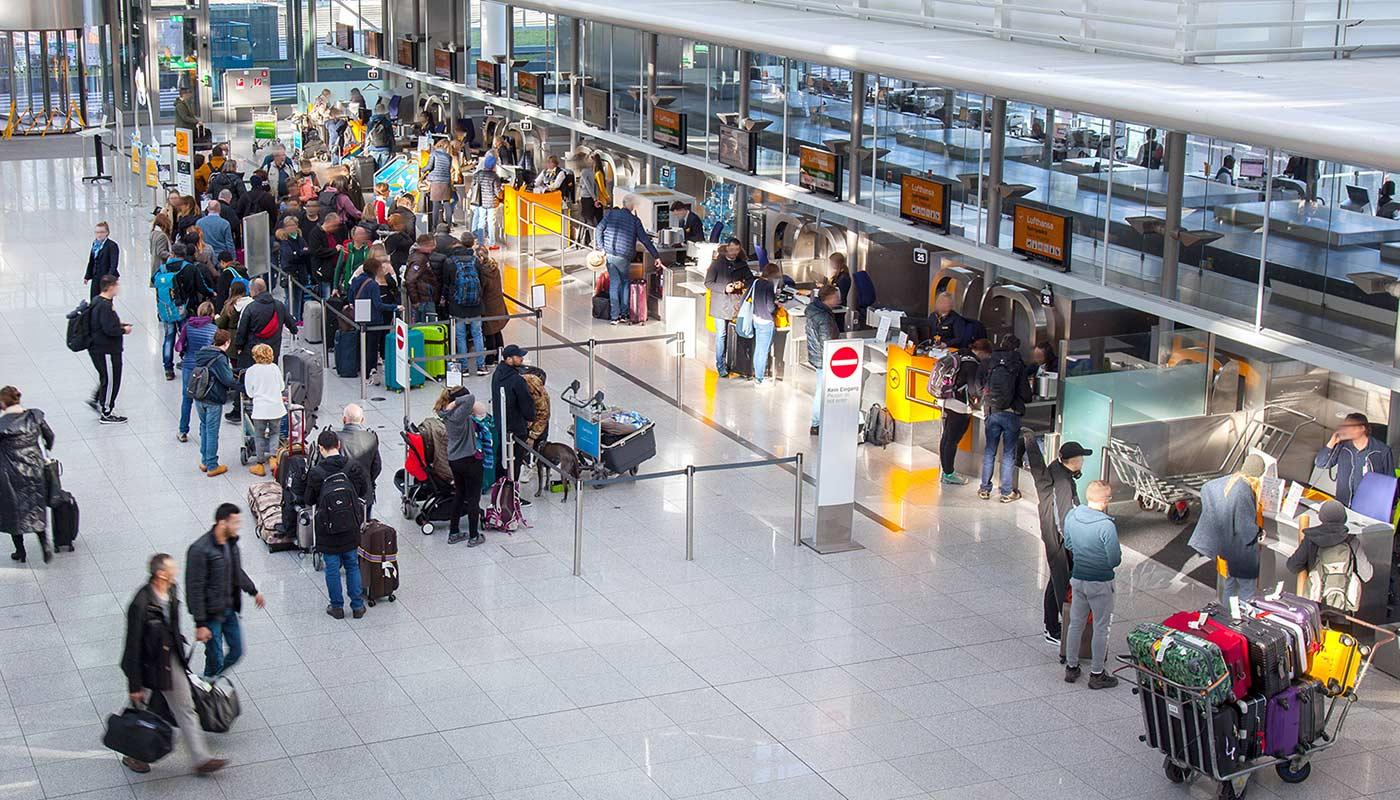
SPAIN. Airport operator AENA handled a record 275.2 million passengers in 2019, a +4.4% increase year-on-year. In the month of December, 18,247,407 passengers passed through the AENA airports, up +3.7% on December 2018.
Of the additional 275,237,801 travellers in 2019, 188.8 million made international flights, +3.5% ahead of 2018. Domestic passenger traffic rose +6.4%.
Adolfo Suarez Madrid-Barajas was the busiest airport, handling 61.7 million passengers, up +6.6%. Josep Tarradellas Barcelona-El Prat followed, with over 52.6 million (+5%), with Palma de Mallorca (29.7 million/+2.2%) next.
Malaga-Costa del Sol Airport reached 19.8 million passengers (+4.4%) and three others again exceeded the 10 million passenger barrier: Alicante-Elche with just over 15 million (+7.6%); Gran Canaria with 13.2 million (-2.3%) and Tenerife South with 11.1 million (+1.1%).
13 JANUARY
UK. A record 80.9 million passengers travelled through Heathrow Airport in 2019, marking the ninth consecutive year of growth for the main London gateway. This passenger growth was driven by larger and fuller aircraft.
Christmas and New Year reunions fuelled passenger growth in December. Over 6.7 million passengers travelled through Heathrow during the festive season, making it the airport’s busiest December ever, up +3.1% year-on-year and the strongest monthly increase of 2019.
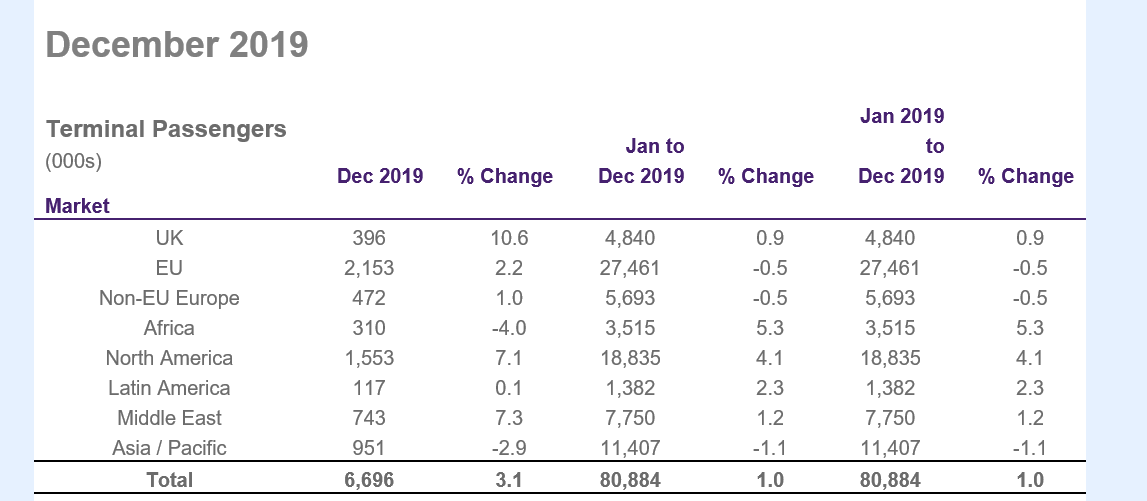
10 JANUARY 2020
FINLAND. Helsinki Airport posted a +4.9% year-on-year increase in passenger volumes in 2019 to reach 21.9 million. Operator Finavia reported a +4.2% traffic increase across its network in Finland to 26 million. “2019 was a year of more moderate growth and a good year overall: air traffic still increased at a rate higher than the long-term average,” commented Finavia Vice President Sales & Route Development Petri Vuori.
GREECE: Athens International Airport recorded an all-time high passenger high in 2019, as passenger traffic reached 25.57 million (+6% year-on-year). The airport said the robust growth was primarily driven by international passengers (+8.6% year-on-year) with domestic traffic flat (+0.3%).
SOUTH KOREA. A record 71.17 million passengers used Incheon International Airport in 2019, a +4.3% increase on 2018 (Source: Incheon International Airport Corporation Executive Director Kim Young-sik in The Korea Times). The number of international passengers at South Korea’s busiest airport also grew +4.3% to 70.58 million, which seems sure to maintain the airport’s status among the world’s five busiest for international traffic. Traffic growth outpaced that for duty free sales, which rose +2.7% year-on-year in 2019 to US$2.43 billion, securing Incheon’s position as the world’s number one airport duty free location.
SWEDEN. Swedavia reported that over 40 million passengers used its ten Swedish airports last year, a -4% decrease compared to 2018. International passengers decreased -2% to nearly 28 million, while the number of domestic passengers totalled about 12.4 million, a -9% decrease compared to 2018. Sweden’s largest airport, Stockholm Arlanda, handled more than 25.6 million passengers in 2019, a -4% decrease compared to 2018.
UK. London City Airport passed 5 million annual passengers for the first time in 2019. The London airport handled 5,100,025 passengers, a +6.3% year-on-year increase. London City Airport Chief Commercial Officer Richard Hill commented: “That is why we are investing half-a-billion pounds in the transformative City Airport Development Programme to increase capacity and improve our facilities for passengers and airlines. This will ensure we can play a greater role in supporting London as an international destination for business and leisure, while also creating more opportunities for people in east London.”
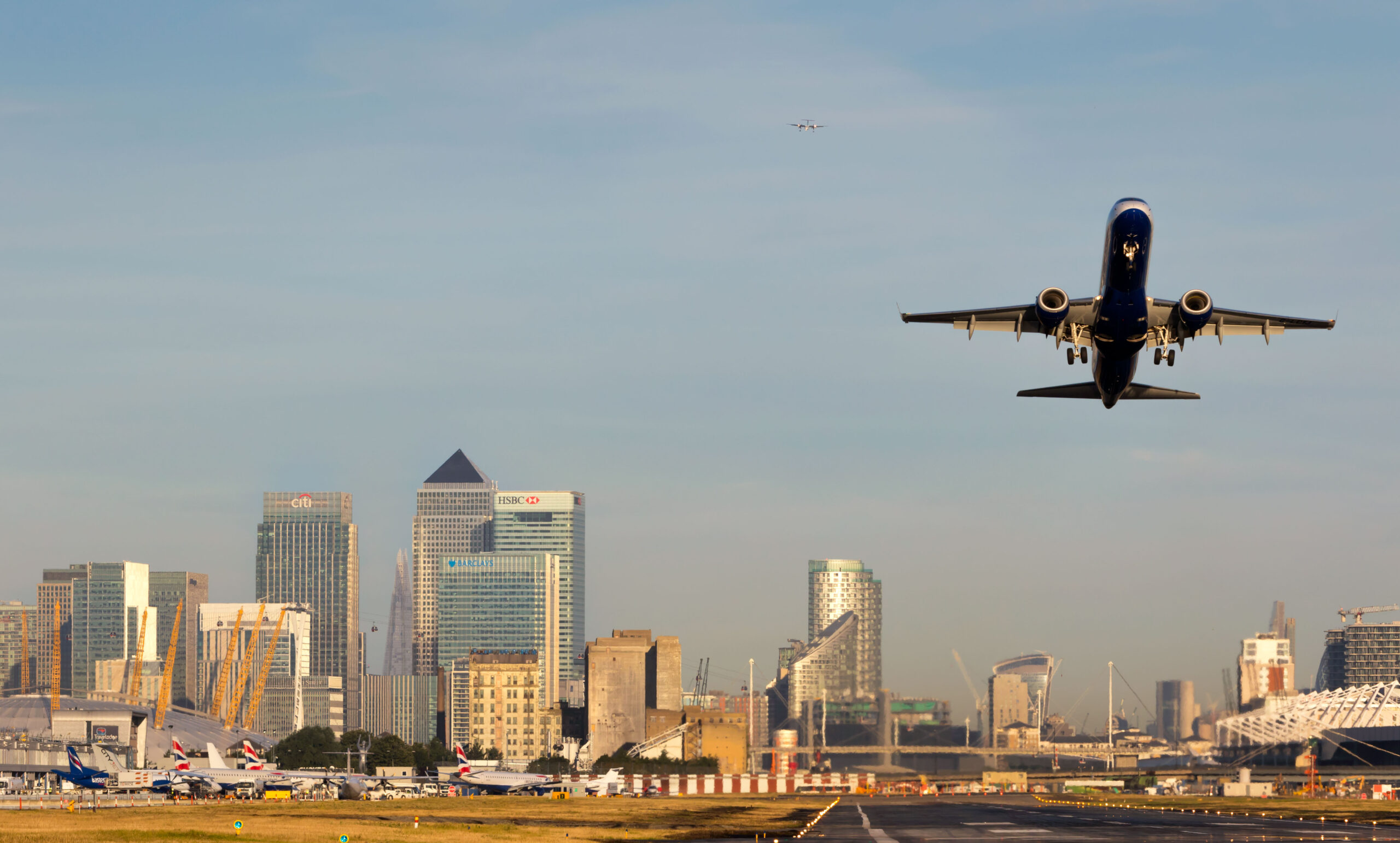
US. Orlando International Airport reinforced its position as the busiest airport in Florida by processing more than 50.1 million passengers in 2019 (+6.73% year-on-year), as calculated by the airport from a 12-month rolling total in October. Greater Orlando Aviation Authority CEO Phil Brown said: “We think 2020 is going to be more of the same. There are signs the economy is dampening a little but the thing about Central Florida is the tourism and leisure economy has been pretty resilient.”
NOTE: To have your traffic figures published on The Moodie Davitt Pax Index, simply send them to Martin@MoodieDavittReport.com and Liam@MoodieDavittReport.com.




